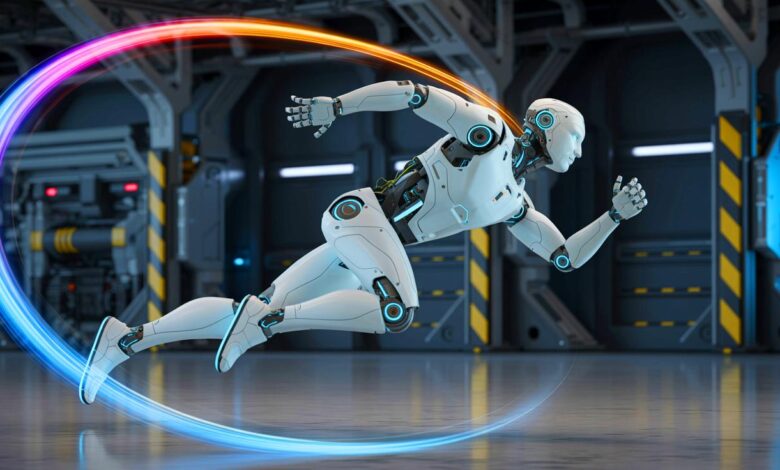China’s L7 Humanoid Hits 9 MPH, Raising Global AI Alarm

▼ Summary
– The L7 humanoid robot by Robotera is the fastest of its kind, reaching speeds of up to 9 mph.
– With 55 degrees of freedom and 400 Nm of torque, the L7 demonstrates remarkable dexterity and strength, capable of lifting 44 pounds.
– Designed for industrial tasks, the L7 can handle delicate operations like sorting objects and using power tools with precision.
– The robot features a multi-sensor fusion system for 360-degree spatial awareness and a swappable battery for uninterrupted operation.
– The L7’s versatility in speed, strength, and agility makes it suitable for applications ranging from manufacturing to entertainment.
China’s L7 humanoid robot has set a new speed record in robotics, reaching an impressive 9 mph while demonstrating remarkable strength and agility. Developed by startup Robotera, this advanced machine represents a major leap forward in bipedal mobility and industrial applications. With its cutting-edge design and versatile capabilities, the L7 is poised to transform multiple sectors from manufacturing to entertainment.
What makes the L7 stand out is its unified “body plus brain” architecture, enabling fluid movements that rival human athleticism. The robot can perform complex maneuvers like 360-degree spins and breakdancing while maintaining perfect balance. In industrial settings, it handles delicate tasks with precision, from sorting objects on a conveyor belt to using power tools for assembly work. Its 55 degrees of freedom and 400 Nm torque output allow it to lift 44 pounds effortlessly, making it a powerhouse in both speed and strength.
A recent demonstration video showcased the L7’s real-world potential, navigating a factory environment with ease. It sprinted across a flat surface, outpacing a human runner, a clear sign of progress in bipedal robotics. Equipped with 360-degree spatial awareness through advanced sensors, the robot adapts seamlessly to dynamic environments. Additionally, its swappable battery system ensures continuous operation, though exact runtime details remain undisclosed.
Beyond industrial uses, the L7 excels in dexterity-driven tasks, such as handling chopsticks, a feat previously achieved by its predecessor, the STAR1. Its ability to perform fine motor skills like ripping paper towels or adjusting curtains highlights its adaptability. Robotera also offers the M7 variant, an upper-body model mounted on a stand for research purposes, which can be upgraded to the full L7 configuration.
The implications of this technology are vast. As humanoid robots like the L7 evolve, they could revolutionize logistics, manufacturing, and even domestic assistance. The combination of speed, strength, and situational intelligence makes it a compelling solution for labor-intensive industries. With Robotera pushing boundaries, the future of robotics appears increasingly dynamic, where machines not only assist but also perform with human-like finesse.
What role will such advanced humanoids play in our daily lives? As their capabilities expand, so too does their potential to reshape industries and redefine automation. The L7 is just the beginning of a new era in robotics.
(Source: Rude Baguette)






